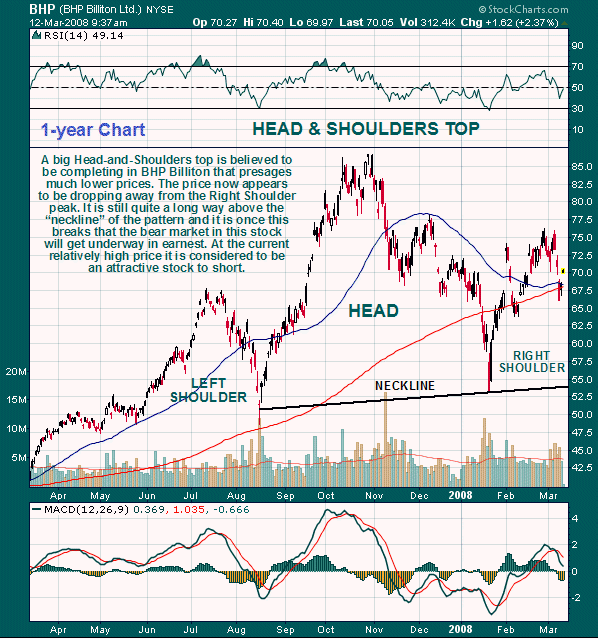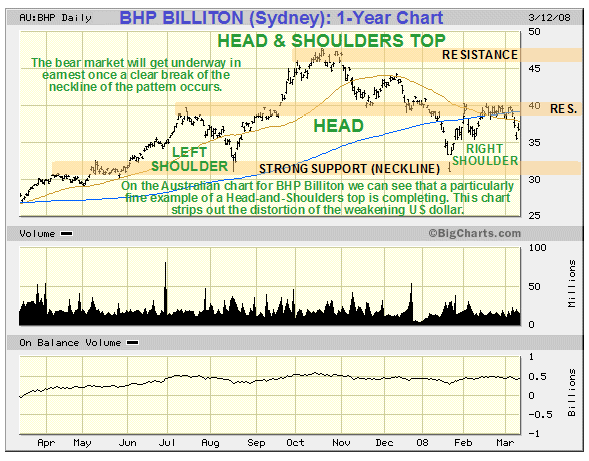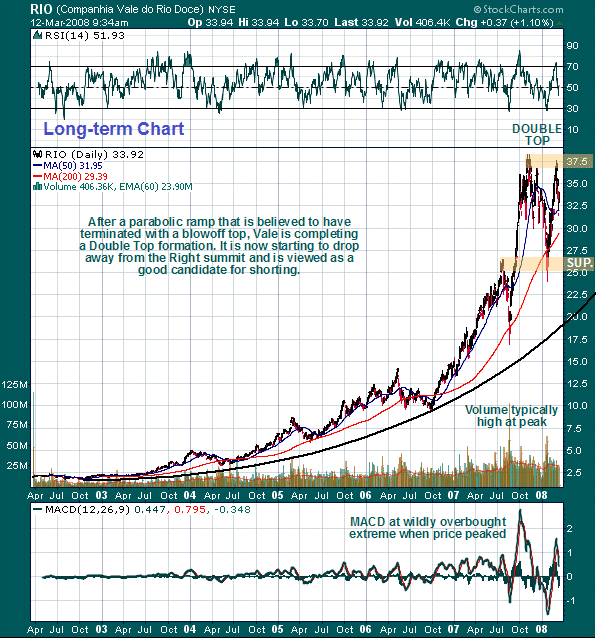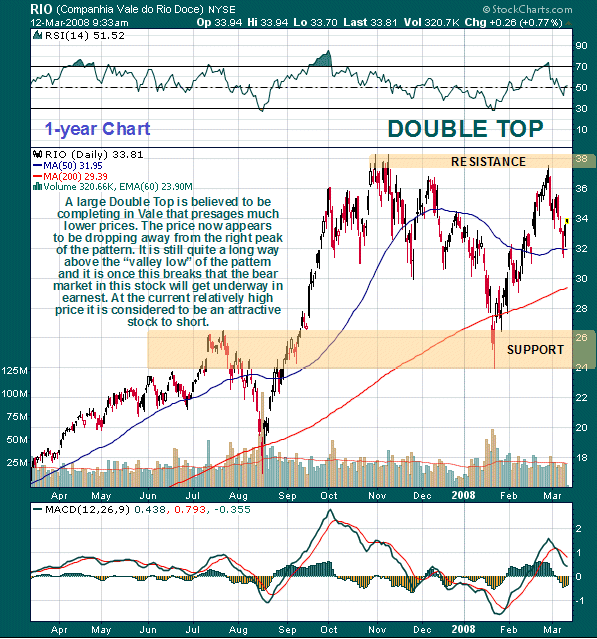The Big 3 Iron Ore stocks
The two commodities which are the principal material pillars of the world economy and vital to its functioning are iron ore and oil. Iron ore is principally used in the production of a variety of steels and unlike oil, whose price is benefiting from production arguably having peaked, iron ore resources will last well into the 22nd century. Thus, at the present time, the price for iron ore, and the prices of the major iron ore stocks, serve as the most accurate barometer of the health and direction of the world economy. A weakening in the price for iron ore and a nascent bear market in the big iron stocks serve as an early warning system that a recession/depression is looming. The purpose of this article is therefore to assess the condition of the world’s “big 3” iron ore stocks from which we should be able to divine the outlook for global commodity markets as a whole, and more than that, the outlook for the global economy.
Before going any further the point should be emphasized that the Precious Metals, gold and silver, are not classified as commodities. They are money, real money, and are mistakenly relegated to the status of mere commodities in the minds of many investors because that is how they have been programmed to think by the architects of the fiat money system, which is, as more and more people are slowly and painfully beginning to realize, facing its nemesis. This being so it is perfectly reasonable for gold and silver to rise in price even as commodity prices generally are going into decline, caught up in the vortex of a global recession/depression.
The big 3 iron ore companies are gigantic corporations that are among the world’s largest mining companies, and together they account for 75% of internationally ocean traded iron ore production. They are BHP Billiton, the world’s largest mining company and the largest publicly traded company in Australia, whose operations include the mining of giant high grade hematite deposits in Western Australia’s Pilbara, Companhia Vale do Rio Doce, mercifully now known simply as Vale, which is the world’s 2nd largest mining company and the premier iron ore producer from its giant high grade hematite resources in Carajas, Brazil, and Rio Tinto, the giant Anglo - Australian mining conglomerate which also produces high grade hematite ore from its huge operations in Western Australia’s Pilbara. Rio Tinto also happens to be the largest coal mining company in the world. In pursuit of our objective to assess the outlook for global commodity markets generally and the outlook for the world economy, we will now examine the charts for all 3 of these highly important companies in detail.
With all 3 of these companies being traded on the New York Stock Exchange, we will use the charts for the stocks traded on this exchange, although we will also include a look at the chart for BHP traded on the Sydney Stock Exchange on which a clear pattern has been discerned that has important forecasting implications.
BHP Billiton BHP $69.58, BHP.ASX A$36.38
Starting with the long-term chart for BHP Billiton we can see an accelerating parabolic advance from about mid-2003 that has culminated in a “blowoff” top, accompanied by an extremely overbought condition revealed by the MACD indicator at the bottom of the chart and the very high volume typical of a top. This blowoff top is common to the long-term charts of all 3 companies.

When we examine the top area for BHP Billiton in detail on the 1-year chart we can readily see a fine, large up sloping Head-and-Shoulders top area, with the price now starting to descend to complete the Right Shoulder. Things will really start to get rough when the price breaks below the “neckline” of the pattern, although as we can see, the price still has some way to drop before it gets to the neckline.

Factoring in the effect of the falling US dollar on the 1-year BHP Billiton chart is easy - we simply look at the chart for the stock traded in Sydney in Australian dollars. This chart strips out the falling US dollar distortion and reveals a Head-and-Shoulders top of startling symmetry, on which we can see that a closing break below A$30.00 will signal a breakdown from the top area.

BHP Billiton website
Companhia Vale do Rio Doce (Vale) RIO $34.23
Moving on to the charts for Vale, we find another spectacular parabolic blowoff top on its long-term chart which culminated in it becoming hugely overbought by around October-November of last year.

On the 1-year chart we can see that it has busied itself since last November by forming a double top with those highs from which it is now decending again. The top area will be complete once the price drops below its January trough at $24.

Vale website
Rio Tinto RTP $433.34, RIO.ASX A$124.50
The long-term chart for Rio Tinto presents a similar picture to the charts for the other 2 stocks - namely a parabolic ascent into a climactic blowoff top, accompanied once again by a hugely overbought MACD indicator and high volume.

The 1-year chart for Rio Tinto shows the price starting to descend from a recent Double Top with its November - December highs, which is similar to the Double Top in Vale, except that the one in Rio Tinto is more symmetrical. The top area will be complete once the price drops below its January trough at about $308.

Rio Tinto website
We can now summarize this analysis by concluding with the following observations: the charts for all 3 of the world’s major iron ore producers are very similar - all are completing major top areas, one a Head-and-Shoulders top, the other two Double Tops. These top areas portend a major bear market in these stocks which are now candidates for shorting. They also imply a looming bear market for commodities generally (except gold and silver, which are real money) and have grave implications for the world economy - they are warning that a recession is approaching, that given the conditions of extreme crisis in the credit markets could easily intensify into a depression. A clear break above the highs by all 3 of these stocks would invalidate the scenario set out here.
Prices are for the close of trading on the 12th March in New York and 13th March in Sydney.



















